10 of the Healthiest Cat Breeds
Any cat can experience health challenges, but choosing a breed celebrated for robust health may help reduce the risk of certain genetic conditions that some cats are known for—and give you peace of mind. Here’s what to know about some of the healthiest cat breeds and how to care for them.
Finding Healthy Cat Breeds
Choosing a healthy cat begins with a reputable breeder. Good breeders will willingly share information about the health conditions associated with the breed they specialize in, and they prioritize genetic diversity in their breeding pairs. This contributes to the overall health of their kittens.
How To Keep Your Cat Healthy
Ensuring your cat lives a long and healthy life means keeping up with proper care at home. This includes providing your cat with:
-
Proper nutrition: Feed your cat high-quality cat food and a balanced diet to provide all essential nutrients, maintain your cat’s overall health, and prevent various health issues. Always consult your veterinarian for advice on the best diet for your cat.
-
Regular vet checkups: Annual checkups with the vet are essential to discover and treat health issues early. These checkups may include physical examinations, vaccinations, dental care, behavioral health screens, and preventive measures against common cat health problems.
-
Exercise and play: Provide a variety of toys and daily playtime to keep your cat active and engaged. Regular physical activity helps prevent obesity, improves your cat’s mood, and enhances your cat’s overall well-being.
-
Mental enrichment: Provide interactive toys, puzzle feeders, and play sessions that challenge your cat’s mind. This mental enrichment can prevent boredom and stress, leading to a happier and healthier cat.
-
Grooming: Brush your cat’s fur regularly to prevent matting and hairballs. Long-haired breeds, in particular, need extra grooming care. Grooming not only keeps your cat’s coat in good condition but also provides an opportunity to spend time with your cat.
Healthy Cat Breeds
1. Balinese

Balinese cats are social, intelligent, and active companions with an average lifespan well above 15 years, potentially up to 18–22 years of age. They are known for their stunning soft coat, large ears, blue eyes, and color-pointed pattern.
While they are generally healthy, they can be prone to genetic heart and liver diseases. Balinese cats may also develop progressive retinal atrophy, which can lead to diminished vision or blindness. Sometimes, their blue eyes may look cross-eyed, a condition called strabismus.
2. Bombay
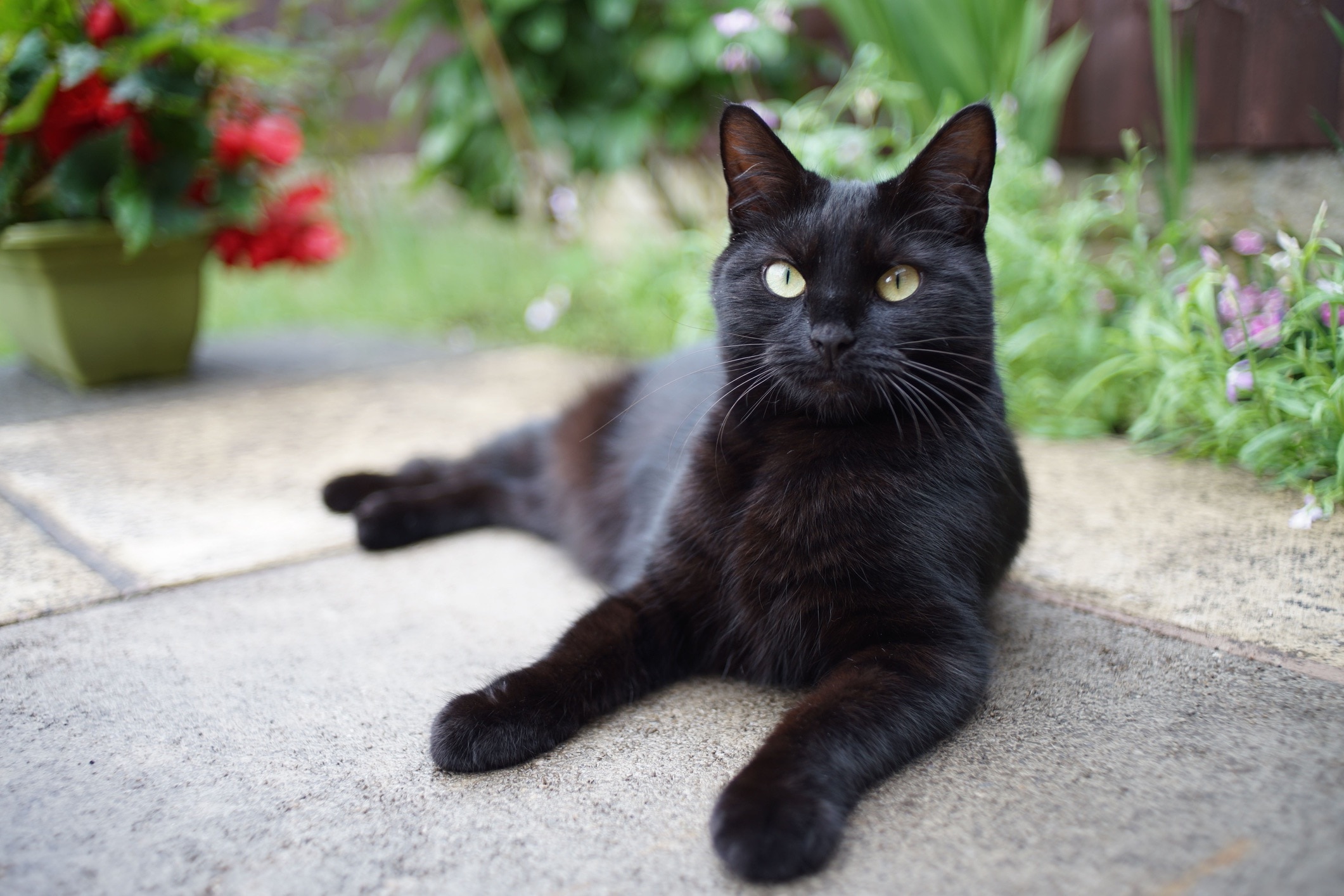
Bombay cats are extroverted and affectionate, and they enjoy being part of the family. They have a sleek, black coat that makes them look like a mini panther.
These cats can live up to 20 years, but be careful to select a reputable breeder, as some Bombays may develop sinus problems if they have a less elongated face. They are generally healthy, but carefully monitoring their diet and weight is crucial because Bombays love to eat and are prone to getting chonky. These agile climbers should have access to multilevel cat trees.
3. British Shorthair
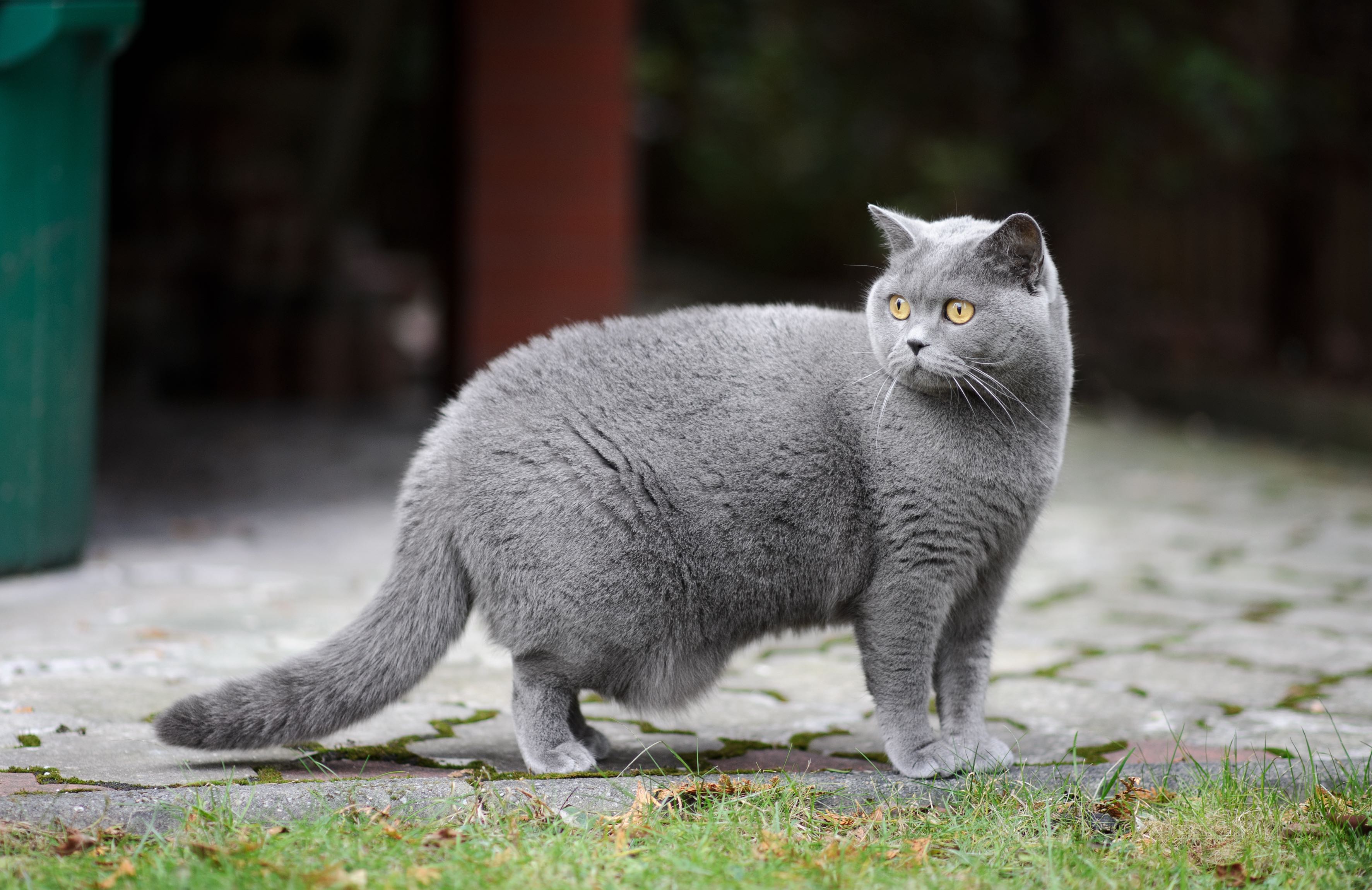
British Shorthairs are calm, quiet, and easygoing cats with a life expectancy of 14–20 years. They make excellent family pets and have dense fur that needs regular grooming to prevent matting. Be mindful of weight gain, as they can be prone to obesity. Maintaining a balanced diet and exercise routine is essential to keep them in top shape.
Some British Shorthair cats are at increased risk of developing hypertrophic cardiomyopathy (a thickening of the muscular walls of the heart), polycystic kidney disease, and hyperthyroidism, so regular veterinary checkups and blood work are necessary.
4. Havana Brown
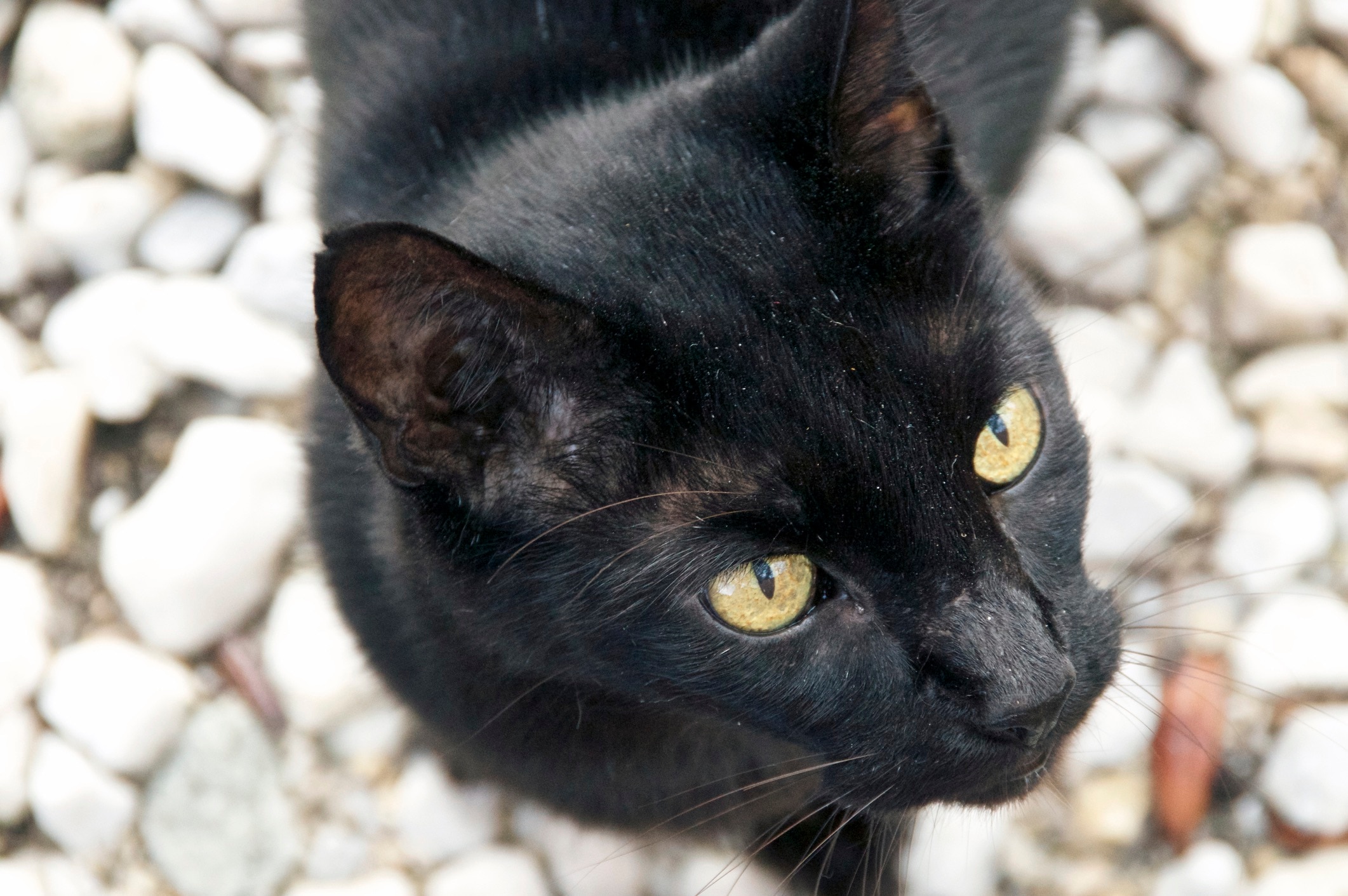
Havana Brown cats are friendly, intelligent, and known for their sleek and elegant physical appearance. These cats have a short coat that requires minimal grooming. Their physical health is robust, and they can live up to 15 years.
Like many other cats, Havana Browns are at risk of weight gain and obesity, so controlling their diet and weight is important. They are active and playful cats that love attention from family members. Regular playtime and social interactions are essential to ensure their well-being.
5. LaPerm

LaPerm cats are affectionate and loyal, with most of them enjoying physical contact. They have a life expectancy of 10–15 years.
Their distinctive feature is their curly fur, which may need extra care with at least weekly brushing to prevent matting and skin issues. Being laid-back and easygoing, LaPerm cats can adapt to many environments—but mental stimulation through play, interactive toys, and training is essential for their happiness.
6. Nebelung
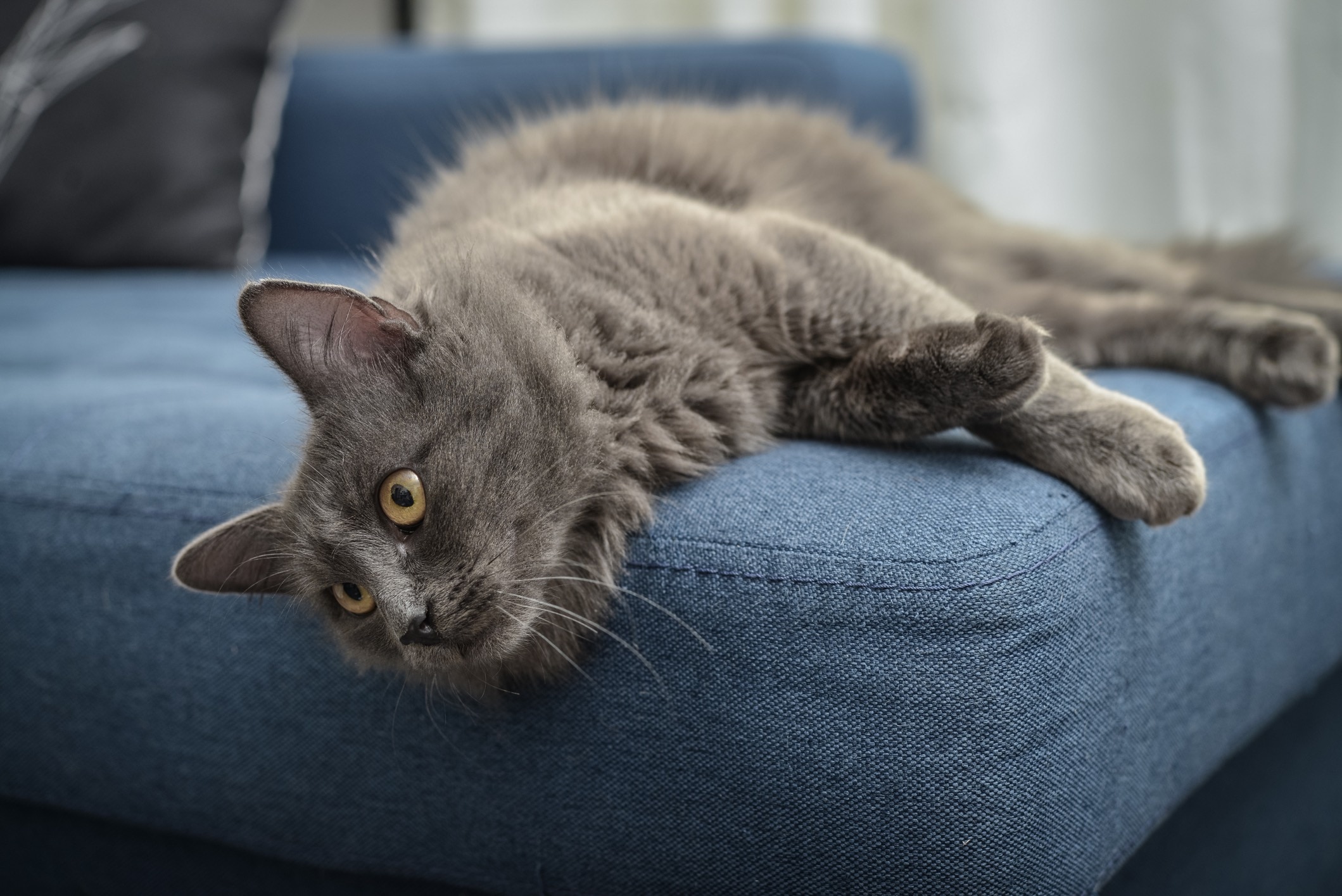
The Nebelung is a rare cat breed noted for their striking, medium-long, soft blue coat. They are mild-mannered, easygoing, and loyal cats who have a life expectancy of over 16 years. Nebelungs thrive on routine and prefer a mellow environment, so they are a good fit for adults and senior human companions.
Regular vet checkups are important to address health concerns early, as their mellow nature might mask signs of illness well. While they are generally healthy, keep an eye out for heart and kidney diseases.
7. Ragdoll

Ragdolls are calm, gentle, and affectionate cats that form strong bonds with their human companions. Their fluffy, luxurious fur requires regular grooming to prevent matting, and they can live about 15–17 years.
Keeping the playful and curious Ragdoll cat physically and mentally stimulated through playtime and companionship is essential for their well-being. Regular vet checkups are crucial for a Ragdoll’s health, as they might be prone to certain genetic issues including hypertrophic cardiomyopathy (thickening of the heart muscle), environmental and food allergies, and bladder stones.
8. Russian Blue
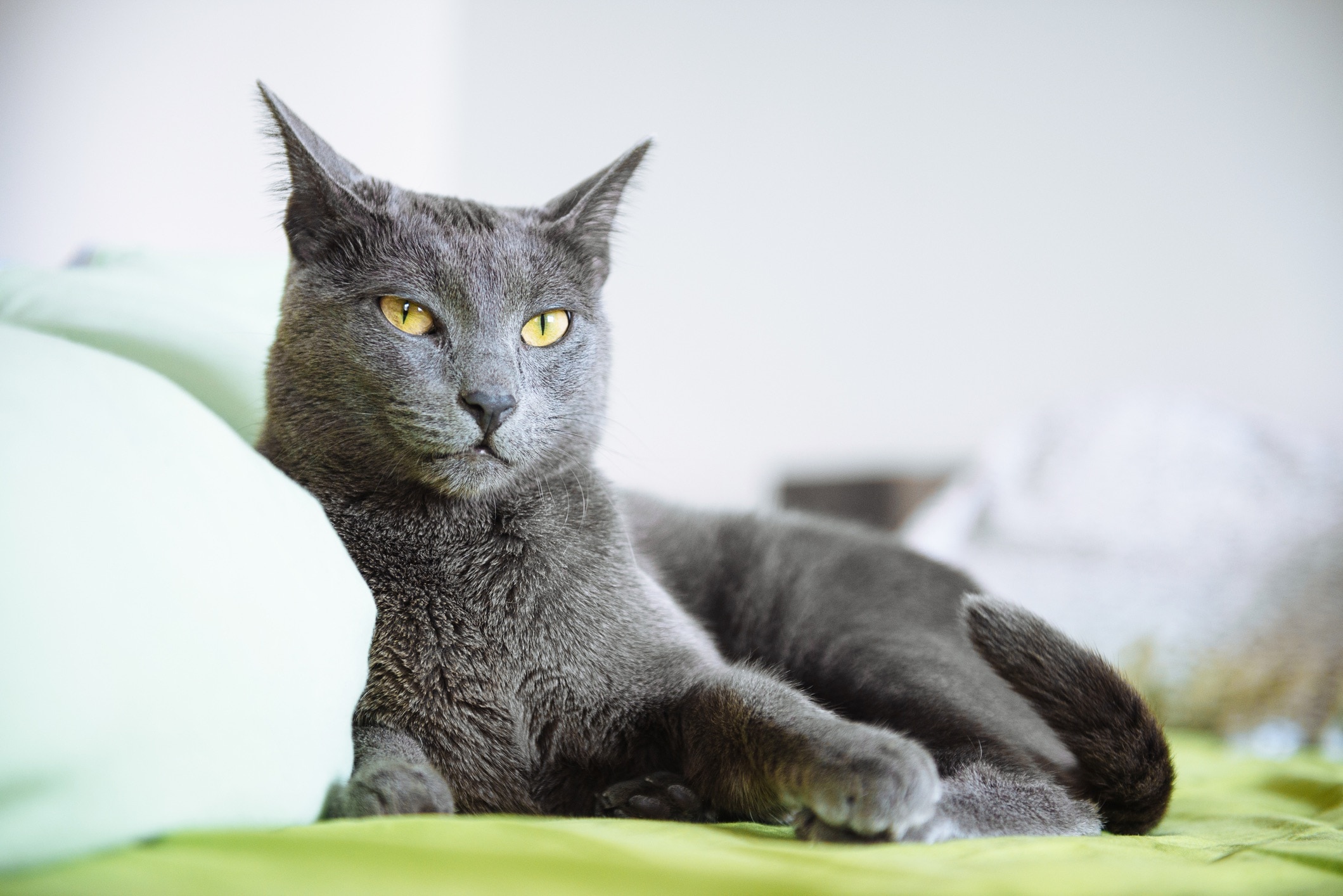
Russian Blue cats are known for their quiet and reserved nature and have a life expectancy of 15–20 years. They thrive in a peaceful environment and are easy to care for due to their short coat.
These cats are generally healthy, but they may be sensitive to stress and prefer a calm environment. Russian Blues have a lower chance of developing common genetic disorders, but they may be at a slightly higher risk of developing bladder stones than other breeds.
9. Siamese

Siamese cats are intelligent, playful, and curious; they are not known for being laid-back. While they typically live about 15 years, they’ve been known to live well into their 20s. Siamese are social and vocal, loving the spotlight. Like Balinese cats, Siamese cats may appear cross-eyed.
Regular vet checkups are essential to maintain their overall well-being and to address health concerns, such as dental issues, asthma, and retinal degeneration that can progress to blindness. Siamese cats are also prone to developing pica (an abnormal desire to ingest non-food items) and wool-sucking, both of which could result in dangerous intestinal obstruction.
10. Siberian

Siberian cats are friendly and playful, making them great family pets with a life expectancy of 10–18 years. They have a semi-long coat that, despite consisting of three types of fur, is surprisingly low-maintenance. But a little extra grooming effort is required during the spring and fall shedding seasons.
Because of their adventurous nature and love of climbing, Siberian cats may be more injury-prone than other breeds, so take care to secure shelves and block access to potentially dangerous heights.
Featured Image: Adobe/MNStudio
